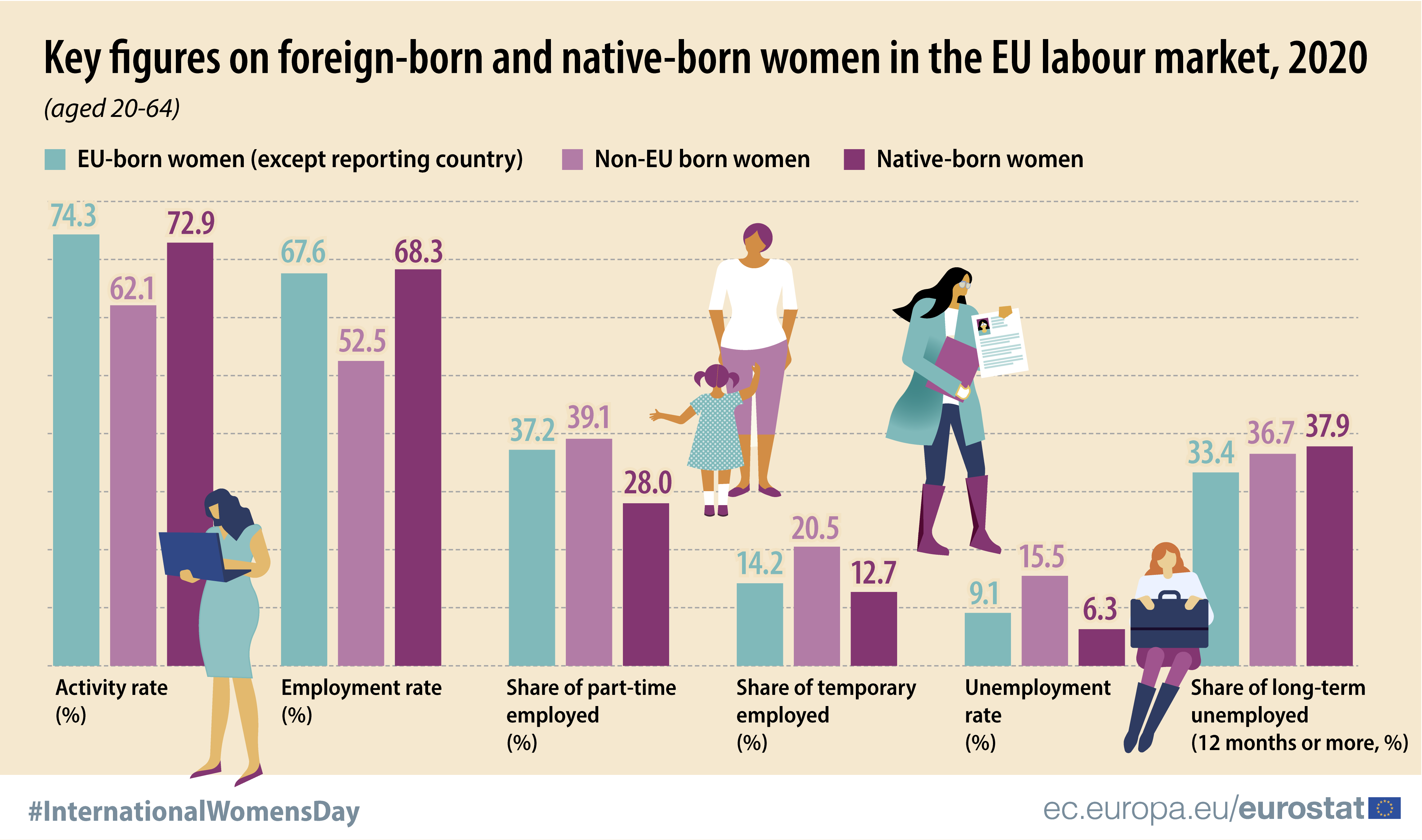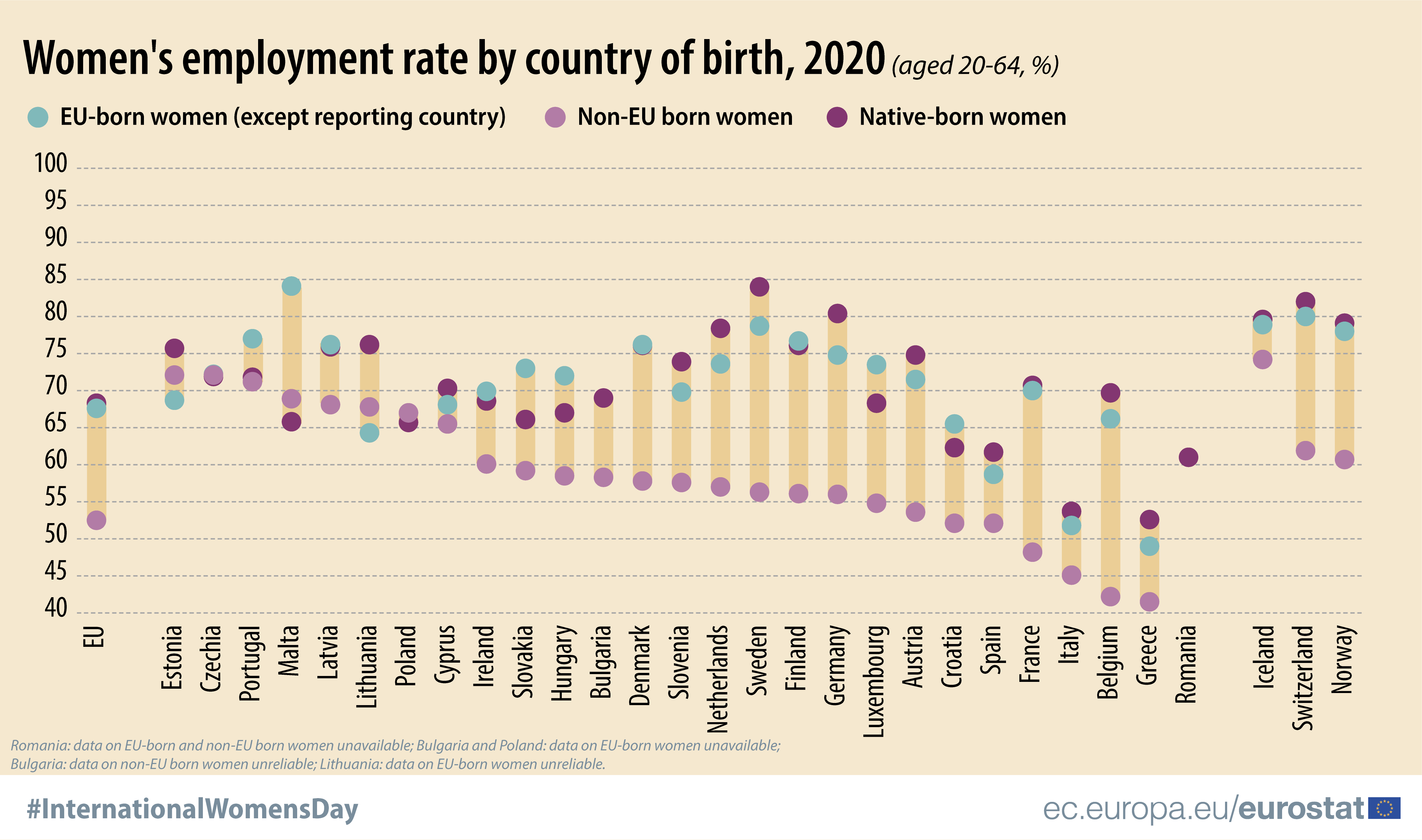On the occasion of International Women’s Day, Eurostat presents statistics on the participation of foreign-born and native-born women in the labour market. In the EU in 2020, women born outside the EU had the lowest employment rate (53%) whereas native-born and EU-born women (except for the reporting country) had similar rates of employment (around 68%). This is one of the labour market key divs on foreign-born and native-born women.
When comparing labour market divs for foreign-born women (EU-born and non-EU born) and native-born women in 2020, non-EU born women had the lowest activity rate (62%). On the other hand, EU-born women had the highest activity rate (74%), closely followed by native-born women (73%). Women born outside the EU also experienced the highest unemployment rate (16%), followed by women born in another EU Member State (9%) and native-born women (6%). Furthermore, long-term unemployment was lowest among EU-born women (33%), as opposed to non-EU born women (37%) and native-born women (38%).
The labour market conditions of employed women also differ. In 2020, the share of part-time employees was highest for non-EU born women (39%), compared with EU-born women (37%) and native-born women (28%). The highest share of temporary employees was also among women born outside the EU (21%), compared with women born elsewhere in the EU (14%) and native-born women (13%).
Among EU Member States, the countries with the highest employment rates for non-EU born women were Estonia and Czechia (both 72%), followed by Portugal (71%). The lowest employment rates for the same group were recorded in Greece and Belgium (both around 42%), followed by Italy (45%). In all but three EU Member States for which data are available, the employment rate for women born outside the EU was lower than for native-born women. The gap was most pronounced in Sweden, Belgium, Germany, France, the Netherlands, Austria and Finland, with differences of 20 percentage points (pp) or more between the two groups.
The country with the highest employment rate for EU-born women was Malta (84%), followed by Sweden (79%) and Portugal (77%). The lowest employment rate for the same group was recorded in Greece (49%), followed by Italy (52%) and Spain (59%). In Malta, the rate observed for women born elsewhere in the EU was 18 pp higher than the rate for native-born women. Slovakia, Portugal, Luxembourg and Hungary all recorded differences of 5 pp or more in the same direction. By contrast, in Lithuania, the employment rate for EU-born women was 12 pp lower than the rate observed for native-born women.
Lastly, the country with the highest employment rate for native-born women was Sweden (84%), followed by Germany (80%) and the Netherlands (78%). The lowest employment rate for the same group was recorded in Greece (53%), followed by Italy (54%) and Romania (61%).





